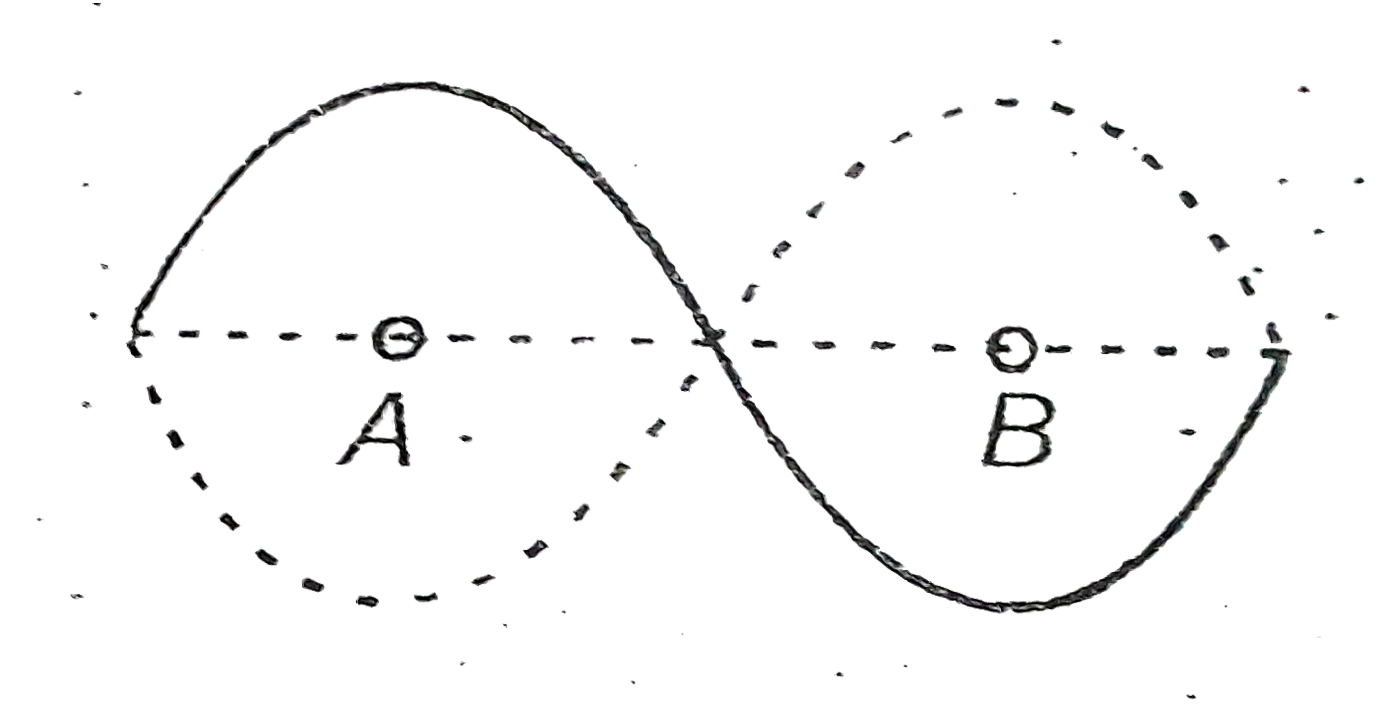Show that for a particle executing SHM, velocity and dispacement have a phase difference of π/2.
To show that for a particle executing Simple Harmonic Motion (SHM), the velocity and displacement have a phase difference of π2, we can follow these steps:
Step 1: Write the displacement equation for SHM
The displacement x of a particle in SHM can be expressed as:
x(t)=asin(ωt+ϕ)
where:
- a is the amplitude,
- ω is the angular frequency,
- ϕ is the initial phase.
Step 2: Differentiate the displacement to find velocity
The velocity v is the rate of change of displacement with respect to time. Therefore, we differentiate x(t):
v(t)=dxdt=ddt(asin(ωt+ϕ))
Using the chain rule, we get:
v(t)=aωcos(ωt+ϕ)
Step 3: Convert the cosine function to sine
We know that the cosine function can be expressed in terms of sine:
cos(θ)=sin(θ+π2)
Thus, we can rewrite the velocity equation as:
v(t)=aωsin(ωt+ϕ+π2)
Step 4: Identify the phases of displacement and velocity
From the equations:
- The phase of displacement x(t) is ωt+ϕ.
- The phase of velocity v(t) is ωt+ϕ+π2.
Step 5: Calculate the phase difference
The phase difference Δϕ between velocity and displacement can be calculated as:
Δϕ=(ωt+ϕ+π2)−(ωt+ϕ)=π2
Conclusion
Thus, we have shown that the phase difference between velocity and displacement for a particle executing SHM is:
Δϕ=π2
The displacement x of a particle in SHM can be expressed as:
x(t)=asin(ωt+ϕ)
where:
- a is the amplitude,
- ω is the angular frequency,
- ϕ is the initial phase.
The velocity v is the rate of change of displacement with respect to time. Therefore, we differentiate x(t):
v(t)=dxdt=ddt(asin(ωt+ϕ))
Using the chain rule, we get:
v(t)=aωcos(ωt+ϕ)
We know that the cosine function can be expressed in terms of sine:
cos(θ)=sin(θ+π2)
Thus, we can rewrite the velocity equation as:
v(t)=aωsin(ωt+ϕ+π2)
From the equations:
- The phase of displacement x(t) is ωt+ϕ.
- The phase of velocity v(t) is ωt+ϕ+π2.
The phase difference Δϕ between velocity and displacement can be calculated as:
Δϕ=(ωt+ϕ+π2)−(ωt+ϕ)=π2
Thus, we have shown that the phase difference between velocity and displacement for a particle executing SHM is:
Δϕ=π2
Topper's Solved these Questions
- MOTION IN A STRAIGHT LINE BOOK - NCERT EXEMPLAR ENGLISHCHAPTER - MOTION IN A STRAIGHT LINE EXERCISE - Very Short Answer Type Qns
14 Videos
- SYSTEM OF PARTICLES AND ROTATIONAL MOTION BOOK - NCERT EXEMPLAR ENGLISHCHAPTER - SYSTEM OF PARTICLES AND ROTATIONAL MOTION EXERCISE - Long answer type questions
12 Videos
Similar Questions
Knowledge Check
A particle executing SHM. The phase difference between velocity and displacement is
A0Bπ2CπD2π
Variation of acceleration a of a particle executing SHM with displacement x is
View SolutionIn a standing wave particles at the positions A and B, have a phase difference of

View SolutionStatement-1 : Frequency of kinetic energy of SHM is double that of frequency of SHM.
Statement-2. In SHM the velocity is ahead of displacement by a phase angle of π2.
View SolutionFor a particle executing S.H.M. which of the following statements holds good :
View SolutionAverage velocity of a particle executing SHM in one complete vibration is :
View SolutionAverage velocity of a particle executing SHM in one complete vibration is :
View SolutionVelocity at mean position of a particle executing SHM is v. Velocity of the particle at a distance equal to half of the amplitude will be
View Solution